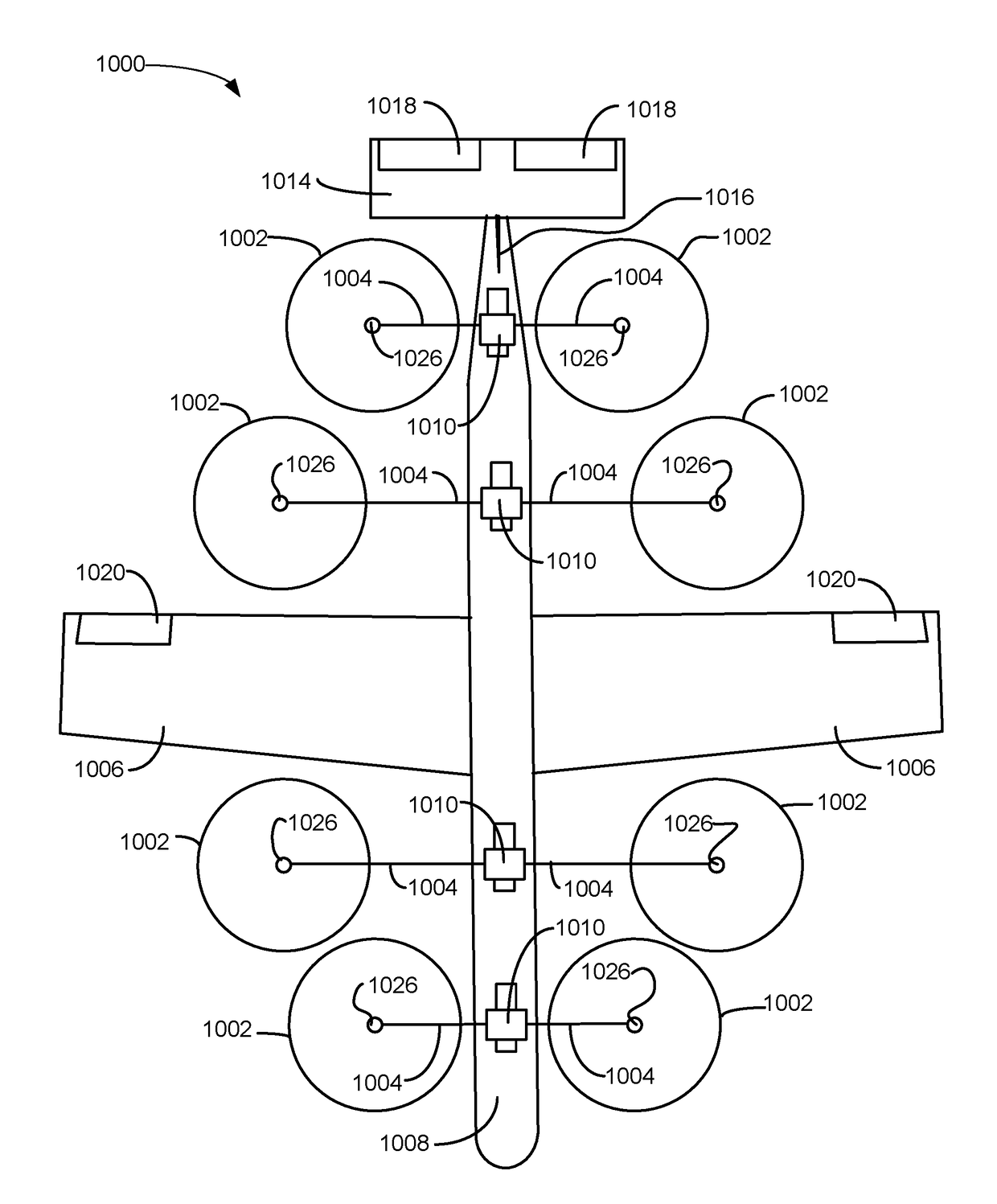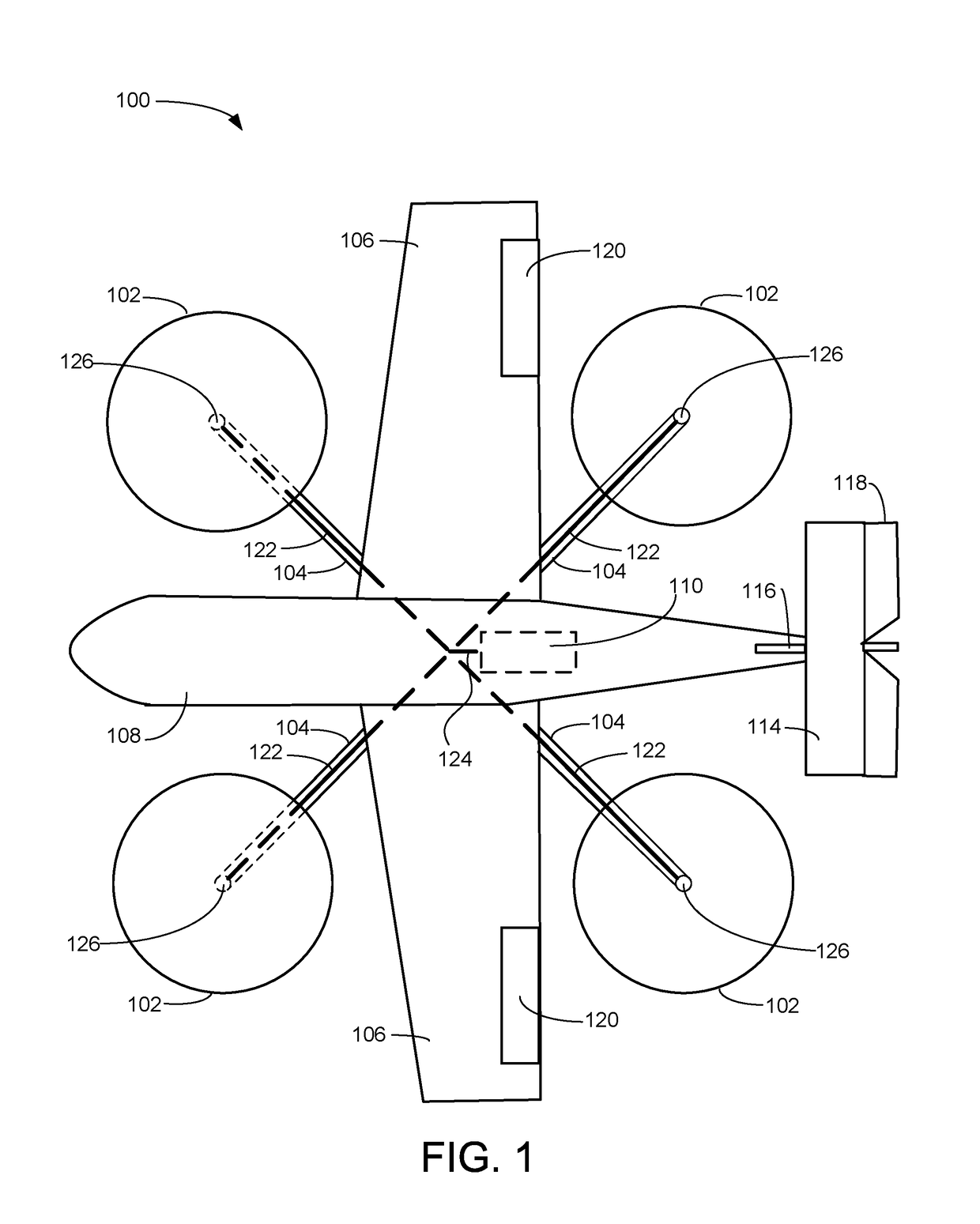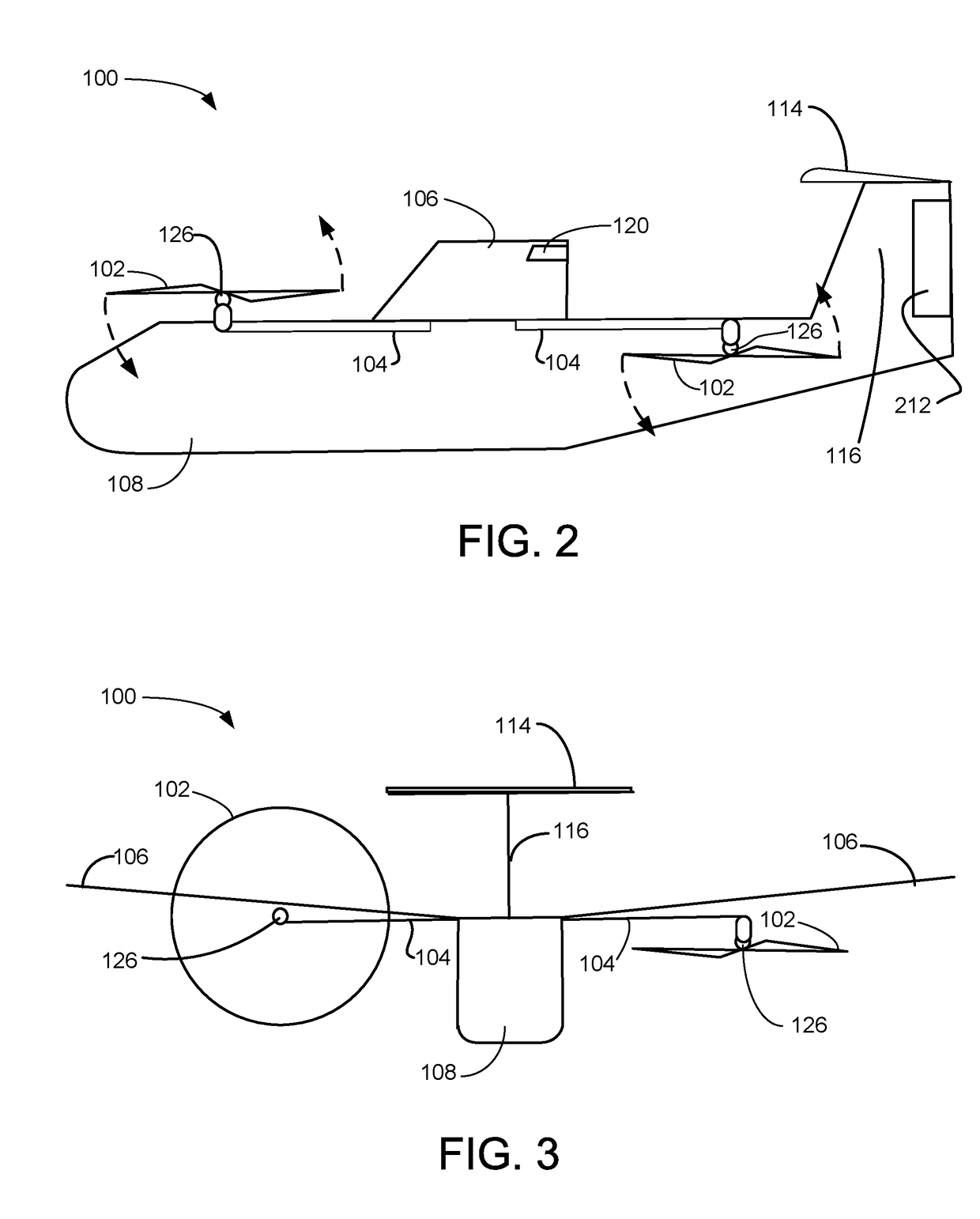Fixed-wing vtol aircraft with rotors on outriggers
- Summary
- Abstract
- Description
- Claims
- Application Information
AI Technical Summary
Benefits of technology
Problems solved by technology
Method used
Image
Examples
Embodiment Construction
[0026]FIG. 1 is a top plan diagrammatic view illustrating an exemplary embodiment of the fixed-wing VTOL aircraft 100 with rotors 102 on outriggers 104, according to a preferred embodiment of the present invention. Fuselage 108, including structural members therein, supports wings 106 with flight control surfaces 120 (such as ailerons 120) and a vertical stabilizer 116 further supporting horizontal stabilizer 114 having a flight control surface 118 (such as an elevator 118). Fuselage 108 further supports outriggers 104 which house drive shafts 122 coupled between motor output shaft 124 and rotational couplings 126. In some embodiments, fuselage 108 may support an emergency ballistic parachute that can deploy if the aircraft 100 is disabled. Motor output shaft 124 is driven by motor 110, which is located within the fuselage 108. Coupling between the motor output shaft 124 and the drive shafts 122 may, in various embodiments, be of any suitable configuration, within the constraints of...
PUM
 Login to View More
Login to View More Abstract
Description
Claims
Application Information
 Login to View More
Login to View More - R&D
- Intellectual Property
- Life Sciences
- Materials
- Tech Scout
- Unparalleled Data Quality
- Higher Quality Content
- 60% Fewer Hallucinations
Browse by: Latest US Patents, China's latest patents, Technical Efficacy Thesaurus, Application Domain, Technology Topic, Popular Technical Reports.
© 2025 PatSnap. All rights reserved.Legal|Privacy policy|Modern Slavery Act Transparency Statement|Sitemap|About US| Contact US: help@patsnap.com



